Everett Ship Repair Adds Two UHP Water Blasting Systems
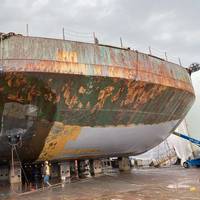
Everett, Wash. ship repair yard Everett Ship Repair (ESR) said it has purchased two new 40,000psi ultra-high-pressure (UHP) water blasting systems. Both have been delivered to the shipyard and put into production.The new water blasting systems are capable of standard surface preparation and specialty applications, and allow ESR to deploy up to four water blasters simultaneously in a wide variety of applications including internal tank hydro blasting for cleaning and coatings removal.a cost effective and environmentally friendly alternative to abrasive solid blasting material…
Bangladesh's Hazardous Shipyards Launch Race for Cleaner, Safer Future
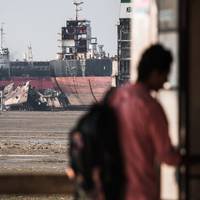
When Samrat Hossain first started cutting up old ships weighing thousands of tonnes in a southeast Bangladesh shipbreaking yard a decade ago, all he would wear was a cap or a helmet.But these days, the 27-year-old spends nearly an hour each day before work putting on his protective gear, which includes special masks, gloves, boots, and a suit."A lot has changed in the last 10 years. Before, PPE (Personal Protective Equipment) was not a factor. But today we are not allowed to work without it…
Tripling the Service Life of Fish Holds
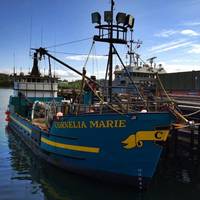
Epoxyamine Coating Extends Tank Maintenance Intervals: A Sherwin-Williams Protective & Marine Coatings Case Study.A commercial fishing vessel that shows up at a seafood processing facility with its catch housed in rusty fish hold tanks is flirting with potential disaster. The processor may refuse the vessel’s entire haul if it sees rusty water or floating paint chips inside the holds. And when your vessel can hold more than $3 million of value at dock prices, you certainly don’t want to run the risk of corrosion eating away at your profits.“If we don’t have good fish holds…
Financiers Turning the Tide on Shipbreaking Practices
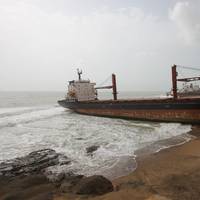
The shipping industry has long been criticised by campaigners for allowing vessels to be broken up on beaches, endangering workers and polluting the sea and sand. Now, it is being called to account from a quarter that may have a bit more clout - its financial backers. Norway's $1 trillion Oil Fund, a leader in ethical investing, in February sold its stake in four firms because they scrap on the beach. Three of the firms excluded by Norway's fund - Taiwan's Evergreen Marine, Precious Shipping and Thoresen Thai Agencies (TTA) of Thailand - say they have been unfairly singled out.
Gray Water & Bilge Water: Taking Steps to Clean Up the Ocean Environment

The fact that improperly-treated gray water pollution is still being dumped off ships in a so-called modern and highly-regulated shipping industry is hypocritical at best. Graywater – which comes from ship accommodation areas (shower/sink), laundry, galley and food pulper – can contain classical pollutants such as nonylphenols, metals, nutrients, surfactants, pathogens, oil, grease, detergent and soap residue. Graywater is sometimes mixed with sewage, depending on the ship design. Graywater can have varying levels of harmful contaminants.
Eliminating Waste Water Discharge
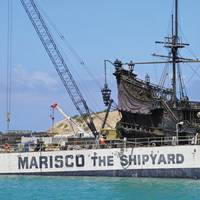
Environmental professionals in industry are tasked with the unenviable responsibility of managing the delicate balance between compliance with ever-increasing and at times mind-numbingly complex and stringent regulations and maximization of production efforts. Consequently, Environmental Compliance Officers are perpetually on the hunt for alternatives to costly process controls and best management practices designed to mitigate potential negative impact. Requirements of the Clean…
Ships' Cleaning Left Toxic Materials
According to a Medaia News, Sheets of decayed metals, hull coatings and lead paint more than one-third of an inch thick peeled off two obsolete U.S. Maritime Administration ships when marine growth was scrubbed from their hulls at the Port of Richmond last month, according to a report prepared for the federal government. The toxic material was left in San Francisco Bay, much of it adhered to thick seaweed and barnacles that accumulated on the ships for more than 35 years as they were anchored in the Suisun Bay Reserve Fleet near Benicia. When the cleaning was done in early August, MarAd said only organic materials would be left in the water.
Anchor Caused ’04 Delaware River Oil Spill
The U.S. Coast Guard announced the cause of the November 2004 oil spill in the Delaware River, saying a submerged 18,000-pound anchor of unknown origin caused the gash in the hulking Greek tanker, the Athos I. The other objects that had been suspected in the accident - a pump casing, a large concrete block, an 11-ton propeller - have been cleared of all charges. It was a costly accident, both financially and environmentally. More than $150 million has been spent on the cleanup so far, and the effects of the oil on the ecosystem will take years to fully determine. Initial surveys of the river bottom after the spill showed several objects in the area - including the anchor, the pump casing, and the concrete block.
Coast Guard: Submerged Anchor Caused Spill
The Coast Guard has completed the investigation into the cause of the oil spill from the Greek tanker Athos I that occurred on the Delaware River on the evening of November 26, 2004. Coast Guard investigators concluded that the vessel came in contact with a submerged anchor while maneuvering through Anchorage #9 enroute to its berth at the Citgo Asphalt Refining Facility in Paulsboro, N.J. The anchor punctured the vessel’s bottom plating in a ballast tank and a cargo tank, resulting in the release of nearly 264,000 gallons of crude oil. Following the incident, surveys of the river bottom in the vicinity of the casualty were conducted by the Army Corps of Engineers and commercial surveyors contracted by the vessel’s owner.
Coast Guard Completes Investigation of Oil Spill
The Coast Guard has completed the investigation into the cause of the oil spill from the Greek tanker Athos I that occurred on the Delaware River on the evening of Nov. 26, 2004. Coast Guard investigators concluded that the vessel came in contact with a submerged anchor while maneuvering through Anchorage #9 enroute to its berth at the Citgo Asphalt Refining Facility in Paulsboro, N.J. The anchor punctured the vessel’s bottom plating in a ballast tank and a cargo tank, resulting in the release of nearly 264,000 gallons of crude oil. Following the incident, surveys of the river bottom in the vicinity of the casualty were conducted by the Army Corps of Engineers and commercial surveyors contracted by the vessel’s owner.
The New IMO Treaty to Ban TBT
The Diplomatic Conference held (October 1-5, 2001) by the International Maritime Organization (IMO) in London adopted the Draft Convention prepared by The Marine Environmental Protection Committee (MEPC) of IMO for the "Control of Harmful Anti-fouling Systems for Ships." The Convention has been developed to immediately ban the use of Tributyltin (TBT) globally in antifouling paints to "protect the marine environment". The ban on TBT has come about because TBT has detrimental effects on non-target marine organisms. In November 1999, IMO agreed that a Treaty be developed by the MEPC to ensure a ban on the application of TBT based antifouling paints by January 1, 2003, and a total ban on the use of TBT by January 1, 2008.





